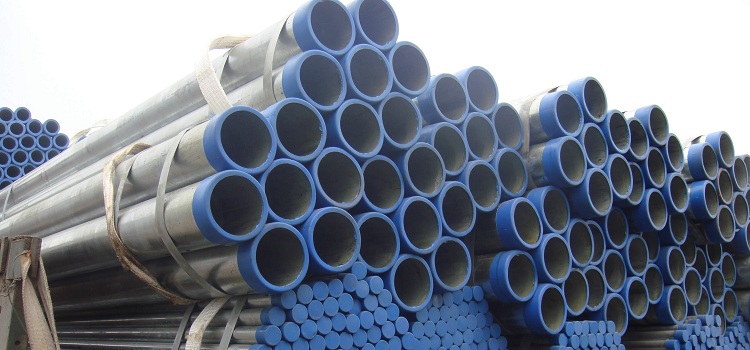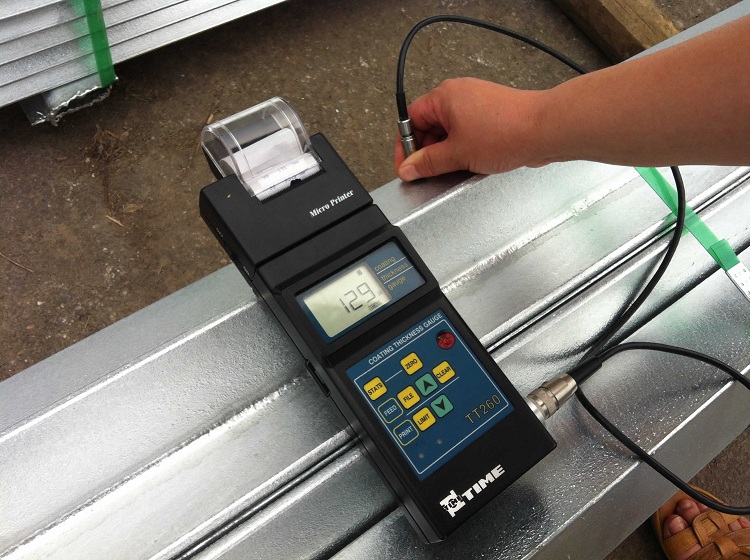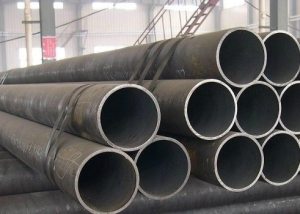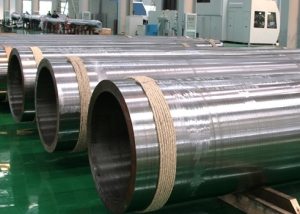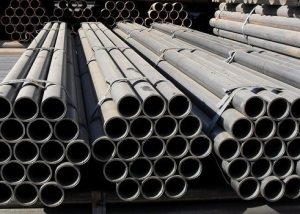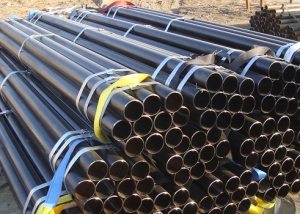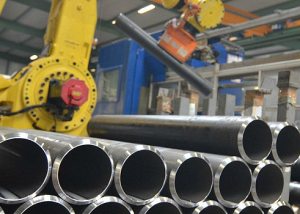Pipes - a material whose design over time confirms its versatility and is becoming increasingly popular in various fields of economic activity, which has led to the diversity of these products. So for the construction of engineering networks, building frames, communications, various types of tubular products are used. The majority of the choice of material belongs to the steel range.
Assortment of galvanized pipes
Any competent construction begins with calculations that take into account the size, weight of the pipes, material properties, especially during installation, cost. In addition to calculations, one also has to solve the issue of the durability of finished structures. Among the ways to protect steel pipe from corrosion and extend the service life, galvanizing of products, the range of which expands with time, is effective. Galvanized pipes serve up to 35 years in normal conditions, are in demand and meet operational requirements. Zinc coating is a fairly quick, inexpensive and reliable way to resist the corrosion of ferrous metal.
The technology of applying zinc coating is applicable to all types of steel pipes, so the range of such products is wide - from ordinary billets with a round cross section to a variety of profile ones, the cross section of which may look like a polyhedron (square, rectangle, hexagon, etc.)
The main names of tubular products in galvanization include:
- galvanized electric-welded - are made of sheet steel of carbon and low alloy grades by the electric arc method (Ø up to 1420 mm) or high-frequency welding of high-frequency TV (Ø up to 630 mm, wall thickness up to 22 mm), followed by the application of anti-corrosion zinc coating. They can be straight-seam or with a spiral seam. Designed for pipeline assembly, construction of structures, frames, ground structures;
- galvanized water and gas pipelines (VGP) - are made of carbon steel, have a weld and threaded threads. They are used for the manufacture of pipelines with water or gas flow, systems of hot water supply, sewage;
- galvanized seamless - the most resistant, durable and expensive pipe from cold-formed or hot-rolled steel (high-carbon, alloy, low-alloy high strength, heat-resistant). The absence of a seam makes it more likely to avoid local corrosion, so this product has a longer service life. Their use is very wide: water / gas pipeline, chemical, oil and gas processing industry, engineering, energy, construction, etc .;
- galvanized profiles - products with square, rectangular, oval sections formed from a round steel pipe. They are used in the construction and installation industry. In galvanization they are distinguished by increased strength and resistance to corrosion;
- pipes for ventilation and drainage - are made of sheet steel with zinc coating, have a wide nominal bore and low weight.
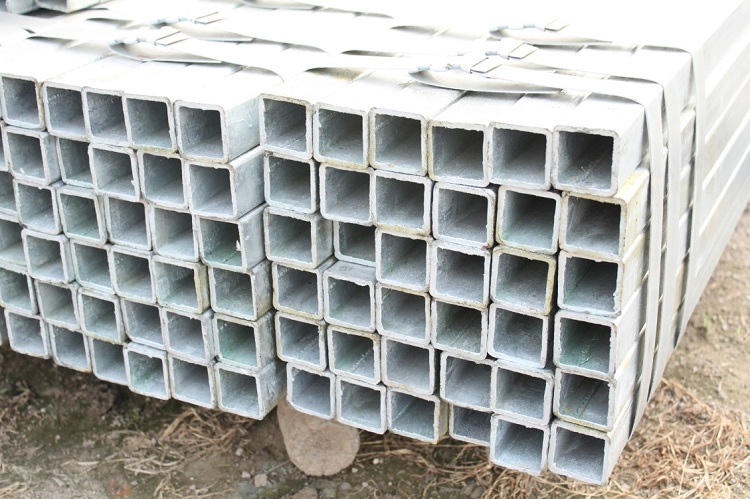
Of the entire assortment of galvanized pipes, it is profile products that are distinguished by the highest strength and resistance to stress
Length is measured, measured, multiple measured, approximate. Basically, the length of the pipes is formed in the range from 4 m to 12.5 m.
The range of steel pipe products complies with GOSTs, which regulate it according to operational requirements. The data on the assortment are presented in the table.
Table 1
| Name of pipes OC | Outer diameter mm | Wall thickness mm | Galvanizing Thickness, microns | Length m |
| Electric-welded straight-seam OTs | 10-530 | 3,5-31 | 30-200 | 4/6/10/12 |
| Electric-welded longitudinal seam thin-walled OTs | 10-76 | 0,7-2 | 30-45 | 4/6 |
| Water waste OTs | 100-220 | 0,7-1 | 15-30 | 1/1,25/3 |
| Water and gas OTs | 10-165 | 1,8-5,5 | 40-200 | 4/6/10/12 |
| Seamless hot deformed OTs | 20-530 | 2,5-75 | 40-200 | 4/6/10/12 |
| Seamless cold deformed OTs | 5-65 | 0,7-12,5 | 30-200 | 4/6/9 |
| Profile square OTs | The size
10-180 |
1-14 | 25-200 | 4/6/10/12 |
Galvanized pipe weight
The main design parameter by which the galvanized pipe is shipped is weight. It depends on the density of steel, wall thickness, thickness (method of application) of the zinc coating. Although the zinc layer practically does not increase the weight of the tubular product, its thickness can be different.
The most dense layer (40-200 microns) is achieved by hot application: the pipe is immersed in a container with molten zinc, and the thinnest - galvanic (10-25 microns). The operating conditions of the future pipe construction and rationality from an economic point of view determine which galvanizing method to use.
The thickness of the zinc coating is also measured by the mass of zinc in grams applied per square meter of surface (g / m2) Modern standards more often use this designation. To recalculate one quantity to another, there are the following coefficients: 0.139 (from g / m2 in microns); 7.2 (from μm to g / m2) So, for example, 50 microns = 360 g / m2.
The calculation of the cost of galvanized pipe is also based on the theoretical weight of one meter of the product, which are specified in the technical specifications, standards of galvanized products.
The theoretical weight of one running meter of a steel pipe without galvanizing can also be calculated by the formula or use the tube calculator on the Internet. Similar calculators are on the websites of many enterprises that produce and sell pipe products. But it is worth remembering that when calculating the weight of the galvanized pipe, you need to add the weight of the protective coating to the result obtained. The approximate value of this parameter can also be found in the documents regulating the production of such products.
Important! The weight of the galvanized pipe is calculated by adding 3% to the weight of the un galvanized steel source.
The weight of 1 m of linear hollow pipe includes:
- steel density (7850 kg / m3 carbon);
- dimensions (diameter, width, section height);
- wall thickness;
To find out the theoretical weight of 1 meter of round or shaped steel pipe products, you can use the formulas from the table. But this method of calculation will require a lot of time if calculations are necessary for a large assortment.
table 2
| Pipe section | Formula | Explanation |
| Round | m = (D - t) t 0.025 | m - weight 1m, kg;
D is the outer diameter, mm; t is the wall thickness, mm; 0,025 - constant for round steel pipes; |
| Square | m = (A - t) t 0.0316 | m - weight 1m, kg;
A is the size of the side of the section, mm; t is the wall thickness, mm; 0,0316 - constant for square steel pipes; |
| Rectangular | m = (A + B - 2t) t0.0158 | m - weight 1m, kg;
A - section width, mm; B - section height, mm; t is the wall thickness, mm; 0,0158 - constant for rectangular steel pipes. |
Or you can use the table from the technical specifications for the products, which indicate the mass of 1 m of the product that meets the requirements.
The weight of 1 meter of galvanized steel welded pipe can be found in table No. 3.
Table 3
| Outer Ø mm | Theoretical weight of 1m pipe OTs, kg with wall thickness, mm | ||||||||
| 2 | 2,8 | 3 | 3,2 | 3,5 | 4 | 4,5 | 5 | 6 | |
| 21,3 | 0,981 | 1,320 | 1,413 | 1,472 | |||||
| 26,8 | 1,251 | 1,710 | 1,833 | 1,917 | |||||
| 33,5 | 1,600 | 2,185 | 2,340 | 2,462 | 2,691 | 2,998 | |||
| 42,2 | 2,045 | 2,813 | 3,014 | 3,185 | 3,480 | 3,894 | |||
| 48 | 2,340 | 3,215 | 3,430 | 3,645 | 3,955 | 4,470 | |||
| 57 | 2,790 | 3,851 | 4,120 | 4,380 | 4,760 | ||||
| 60 | 2,947 | 4,070 | 4,347 | 4,615 | 5,027 | 5,745 | 6,345 | ||
| 76 | 3,760 | 5,203 | 5,563 | 5,922 | 6,450 | 7,314 | 8,169 | 9,015 | |
| 89 | 4,420 | 6,130 | 6,551 | 6,793 | 7,602 | 8,630 | 9,662 | 10,670 | |
| 102 | 5,078 | 7,057 | 7,540 | 8,035 | 8,756 | 9,961 | 11,145 | 12,320 | |
| 108 | 5,388 | 7,479 | 8,001 | 8,520 | 9,300 | 10,570 | 11,835 | 13,082 | |
| 114 | 5,685 | 7,911 | 8,455 | 9,000 | 9,825 | 11,176 | 12,512 | 13,845 | |
| 127 | 6,355 | 8,836 | 9,446 | 10,062 | 10,981 | 12,500 | 14,000 | 15,490 | |
| 133 | 6,655 | 9,261 | 9,910 | 10,548 | 11,516 | 13,115 | 14,690 | 16,255 | |
| 140 | 10,445 | 11,125 | 12,130 | 13,820 | 15,500 | 17,150 | |||
| 159 | 11,890 | 12,670 | 13,825 | 15,750 | 17,664 | 19,561 | 23,320 | ||
Knowing the weight of one running meter, you can calculate the mass of a unit of a product of a given length, the weight of a ton of products and, accordingly, its price, which constantly varies depending on the cost of raw materials. When receiving a batch of pipes, its mass can be determined by multiplying the number of copies by the length and theoretical weight of 1 m of this size, thereby determining the weight value of the entire batch without building weights.
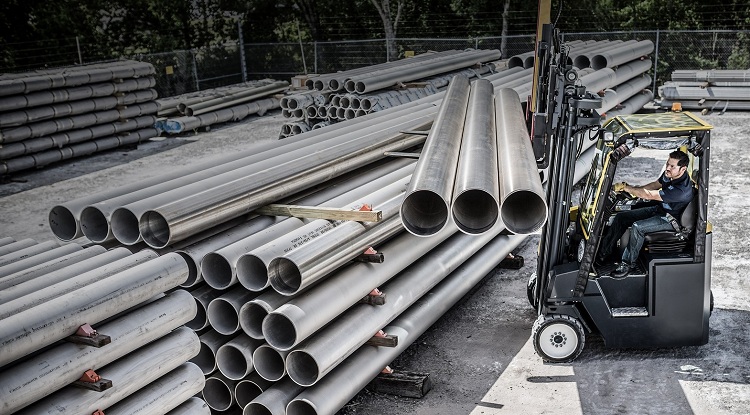
It is necessary to know the weight of the pipes in order to calculate the costs of their transportation, storage, as well as to draft the future design of these products
Theoretical weight is effectively close to the actual (determined by weighing on the scales), the value of which fluctuates in one direction or another.Actual weight varies even from the state of the environment, so wet weather can increase the weight of pipes by 1-5%. It also varies depending on the wall thickness of the product, the deviation of the value of which can reach ± 12%. The maximum deviations in the mass of pipes should not be higher than + 8%. At the request of the customer, the maximum mass deviation should not exceed + 7.5% (batch), + 10% (unit of production).
Pipe rolling weight - an important value for construction calculations in the construction of metal structures. Galvanized pipe is often used for the construction of frame structures of various types of complexity. In order for the structure to be reliable, durable and at the same time easy to make the calculation of the individual parts of the structure by weight is necessary to maintain a load balance.
Dimensional data of galvanized pipe rolling are needed to calculate not only the weight, but also the volume of shipped products during reception / transmission. These values are important during placement, storage of the ordered batch of pipes. Steel pipe products have a large mass, it must be considered when choosing a vehicle for transportation. It is more advisable to determine the weight parameters than cubature.
The application of anti-corrosion zinc coating is applicable to pipe products of various assortments. It made it possible to obtain a qualitatively new product with a long service life without making it heavier and more expensive, besides strengthening strength, resistance to adverse conditions, wear, and loads. The correct selection of galvanized pipes for the purpose, size and weight parameters plays a decisive role in the construction of structures and organization of pipelines.
